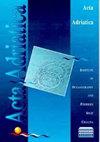北亚得里亚海致密水:自60年前Mira zore - amanda开创性工作以来的经验教训
IF 0.6
4区 生物学
Q3 MARINE & FRESHWATER BIOLOGY
引用次数: 1
摘要
这篇综述首先赞扬了著名的克罗地亚海洋学家米拉·佐尔-阿曼达,以及她在1963年对亚得里亚海水团的开创性工作,并强调了密度最大的地中海水团:北亚得里亚海致密水(NAddW)的重要性。这种水团是通过亚得里亚海北部广阔地区冬季大量的地表冷却和蒸发而产生的,已知:(1)影响亚得里亚海-伊奥尼亚热盐环流,(2)将氧和碳带到亚得里亚海深层,(3)更广泛地说,对整个亚得里亚海的物理和生物地球化学有重大影响。其次,回顾了亚得里亚海坳陷NAddW从预处理、生成、扩散到聚集的物理过程。然后,讨论了NAddW特性的时间演变对(1)全流域年际和年代际变率以及(2)持续气候变化导致的更温暖和更咸的源特征趋势的影响和联系。然后介绍了长期观测和大气-海洋模式在事件、年代际和气候研究中的重要性。最后,回顾了已确定的差距和未来研究的前景。本文章由计算机程序翻译,如有差异,请以英文原文为准。
North Adriatic Dense Water: lessons learned since the pioneering work of Mira Zore-Armanda 60 years ago
This review first pays tribute to the famous Croatian oceanographer, Mira Zore-Armanda, and her seminal work on the Adriatic water masses in 1963, and emphasises the importance of the densest Mediterranean water mass: North Adriatic Dense Water (NAddW). This water mass is generated through substantial wintertime surface cooling and evaporation over the wide northern Adriatic and is known to (1) influence the Adriatic-Ionian thermohaline circulation, (2) bring oxygen and carbon to the deep Adriatic layers and, (3) more generally, have a substantial impact on the physics and biogeochemistry of the whole Adriatic. Second, the NAddW physics, from preconditioning, through generation and spreading, to accumulation in Adriatic depressions, is reviewed. Then, the temporal evolution of the NAddW properties influenced and connected to (1) basin-wide interannual and decadal variability and (2) trends towards warmer and saltier source characteristic due to ongoing climate change, is discussed. The importance of long-term observations and atmosphere-ocean modelling in event, decadal and climate studies is then presented. Finally, a review of the identified gaps and perspectives for future research is concluding this article.
求助全文
通过发布文献求助,成功后即可免费获取论文全文。
去求助
来源期刊

Acta Adriatica
生物-海洋与淡水生物学
CiteScore
1.60
自引率
11.10%
发文量
13
审稿时长
>12 weeks
期刊介绍:
Journal "Acta Adriatica" is an Open Access journal. Users are allowed to read, download, copy, redistribute, print, search and link to material, and alter, transform, or build upon the material, or use them for any other lawful purpose as long as they attribute the source in an appropriate manner according to the CC BY licence.
 求助内容:
求助内容: 应助结果提醒方式:
应助结果提醒方式:


